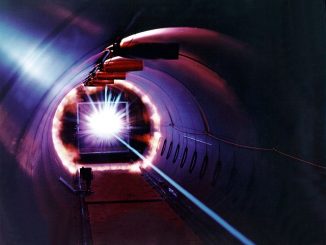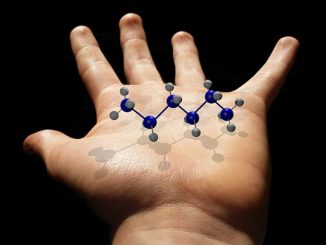
Scientists have been dreaming (or maybe fantasizing might be a better word) about quantum computers for years. And it’s pretty understandable, considering how such computers can theoretically solve some of the world’s most complicated problems unbelievably faster than any existing traditional computer. It makes use of concepts such as superposition (where a quantum bit can exist in two states at once) and entanglement (particles separated by distance interact with each other in a way that they can’t be described independently), and can process data in parallel (several things at the same time) instead of in series (doing a things one at a time in sequence), which is what makes it do its computing much more quickly.
A few decades later, quantum computers still remain in the realm of science fiction. Although there have been some encouraging advancements, there’s still obviously a long way to go. But with a recent breakthrough involving molecular magnets, it appears we may be another step closer towards realizing that elusive dream.
Molecular magnets are basically molecules that have magnetic capabilities. They’re generally made up of only a few atoms, which makes it possible to compress them together at ultra-high densities. If a hard-disk drive was to use molecular magnets as bits, its capacity can hypothetically be increased up to a thousand times, which means a standard hard-disk will be able to store over 1,000,000 gigabytes of data. Aside from increasing a hard drive’s storage capacity, molecular magnets can supposedly be used in quantum computing too. But there’s a big stumbling block.
In theory, a hard disk that’s made up of magnetic molecules will lose all of the data that’s stored in it unless it’s maintained at a temperature no higher than -200 degrees Celsius. Because this is a bit impractical, researchers have been attempting for years to figure out how to design magnetic molecules that do not require such stringent temperature settings, in other words, molecular magnets that can stay operational even at room temperature.
Thanks to a research team led by Professor Stefano Sanvito, Director of the CRANN Institute at Trinity and Investigator in the Science Foundation Ireland-funded centre AMBER, efforts toward achieving that goal finally seem to be paying off.
According to a report that came out of Trinity College Dublin, Professor Sanvito, together with Dr. Alessandro Lunghi (of AMBER) and University of Firenze Professor Roberta Sessoli and her team, were able to demonstrate that when molecules are engineered to be as rigid as possible, they become capable of operating at normal room temperature. It is this capability that can make these molecular magnets the stuff that quantum computers are, or will be, made of.
Quantum computing is hailed as the future. Needless to say, we all can’t wait for them to become reality.
- Bulenox: Get 45% to 91% OFF ... Use Discount Code: UNO
- Risk Our Money Not Yours | Get 50% to 90% OFF ... Use Discount Code: MMBVBKSM
Disclaimer: This page contains affiliate links. If you choose to make a purchase after clicking a link, we may receive a commission at no additional cost to you. Thank you for your support!




I never really understood why the magnets has to be so small, take for instance holding a magnet to a calculator and put that magnet back on the calculator will remember ALL the exact numbers ON THE MAGNET (Youtube vid trick)…and is it also by no coincidence that ‘North and South’ mags combined make ‘East’ as a single magnet!??!